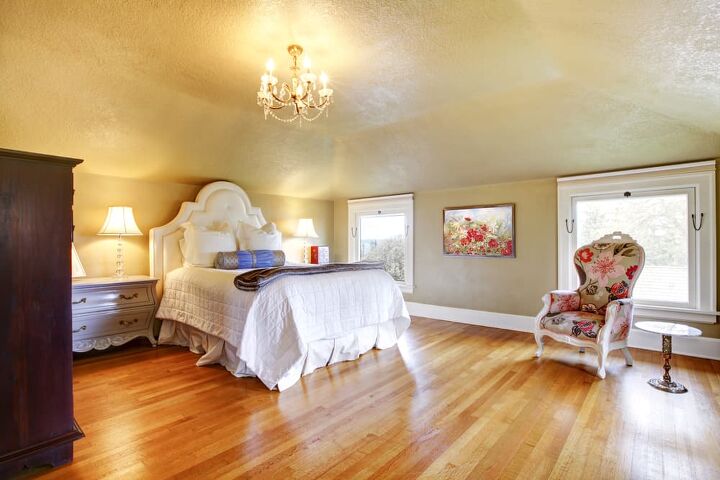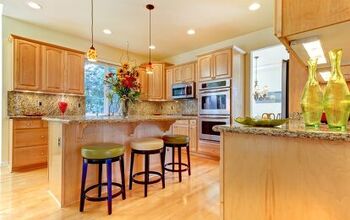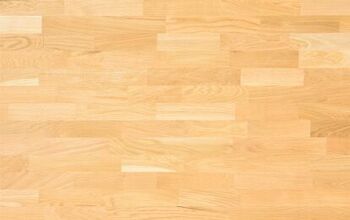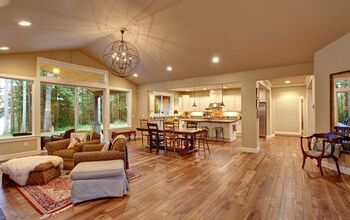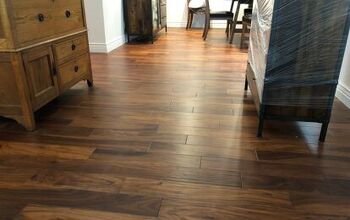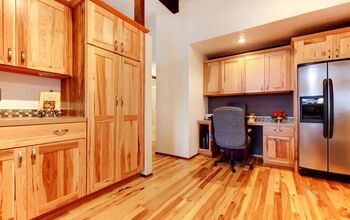What Are The Pros And Cons Of Maple Hardwood Flooring?

Maple hardwood flooring has been around since Colonial times. As a part of the all-American aesthetic, maple flooring remains popular throughout the United States. Of course, part of the reason it’s so common is that maple was one of the only hardwoods Colonial folk had available to them. However, things have changed. So, is it worth getting your flooring done in this wood style anymore?
Maple is a light-colored wood that has a consistent look and also has a solid surface that’s easy to clean. While it offers up a beautiful appearance for large, wide-open spaces, it’s not always the most stable wood choice that you can have. It is durable and polishes well, so it’s generally a good choice for homeowners who want to have a lot of bang for their buck.
If you’ve been eyeing up maple hardwood floors for your own home, it’s important to weigh the benefits and problems that come from it. With a little reading, you’ll be able to determine which flooring works best for you.
Don't want to do it yourself?
Get free, zero-commitment quotes from pro contractors near you.

The Perks Of Maple Hardwood
Maple hardwood is one of the flooring industry’s go-to’s when it comes to effortless style and class. Here’s why people are smart to choose maple for their flooring…
Appearance
The light, golden glow that most maples offer complements the vast majority of room styles out there. After all, light colors tend to open up a room. People also tend to prefer warm colors in many parts of their homes. Since yellow tends to warm up a place, this floor coloring also tends to make a place look more inviting.
If you want to pair maple flooring with certain colors, it’s good to do a little research ahead of time. Maple tends to work best with reds, yellows, blues, and purples. However, it’s versatile enough to work with almost any home. After all, it has a remarkably uniform color, which means that it won’t ever become distracting to viewers. That alone puts it ahead of many others.
Timelessness
If nothing else, there is something amazing about the staying power that maple flooring has. Maple has been in style for several decades. Unlike others (looking at you, honey oak!) on the market, it hasn’t gone out of style. Not once. At times it got rarer, but it never was panned as tacky. As a result, it contains a timeless look that can be dressed up or down as needed.
Durability
If you are looking for a durable wood, then look no further than the maple family. Maple is a fairly strong hardwood, especially when it comes to types like hard maple and sugar maple. The hardness of this wood family means that your floor will be resistant to dents, even when other types of wood would show wear and tear.
Since this wood family is also durable when it comes to chemicals, it tends to be fairly easy to maintain. Standard wood polishes will work just fine and keep them moistened for years to come. With that said, there are still some drawbacks that can come with maple in terms of durability.
(Relatively) Easy To Paint
Let’s also take a look at the general sustainability of fine maple. While many kinds of wood take to staining well, some don’t. That’s why people who want to have all the control in the world over the color of their flooring need to find a wood type that can soak up that stain and retain it. Maple fits that bill beautifully for light stains.
Though maple has a naturally golden undertone, this is one wood that can be painted any color that you could possibly imagine. We’ve even heard of people painting maple wood blue—though it’s definitely one of the harder colors to achieve. If you want hardwood flooring in exotic colors, it’s clear that maple might win you over.
With that said, most maple types can be somewhat uneven with staining. However, this tends to pertain to soft maples rather than hard maples. If you want to get darker stains, it’s best to opt for another type of wood.
The Pitfalls Of Maple Flooring
While maple flooring has a lot of perks, it’s not without its pitfalls. Even though this wood type has a sterling reputation among builders and interior designers, there are still drawbacks you need to be aware of. Here’s why a lot of people end up avoiding maple…
The Price
Wood flooring, in general, is going to be pricey. It’s a luxury these days, especially when there are other materials like vinyl that can mimic the look at a fraction of the cost. Unfortunately, this is even more true when it comes to hardwoods. While maple is not the most expensive wood you can use for flooring, it absolutely is one of the pricier ones on the market.
Maple is more affordable than oak, sure, but it’s still not exactly a cheap material. It can be anywhere from $6 to $12 per square foot or more, depending on the wood type. The price of hardwoods, in particular, happens to be on the rise. So, be prepared to pay extra.
Scratch-Prone
Maple is a bit strange. On one hand, the hardness of most maples will make it durable in the face of dents and cracks. That alone is a huge benefit. On the other hand, it’s important to remember that some (but not all) maples tend to have a soft grain to them. As a result, they often end up prone to scratching if you are not careful.
If you have pets that have claws (ie, dogs), you will probably need to figure out a way to reduce scratching. While you can always use rugs and floor protectors on your furniture, the truth is that it’s still something that could become an issue. Though scratches can happen, regular waxing will reduce the damage immensely and most maples can bounce right back.
Instability
At times, maple woods can be a bit strange. While they won’t dent, this type of wood can be prone to moisture-related issues. No, we’re not talking about it being prone to mold or rot. (Actually, maple is great for being rot-proof compared to other woods in its price point range.) Depending on the moisture in your area, you might notice a little bit of warping from time to time.
It’s not uncommon to hear a “noisy house” if you want to get maple. Your home will be a little more creak-prone if you get this hardwood.
Our Take On Maple: Is It A Good Investment?
Maple is a smart choice if you are looking for an affordable way to get real hardwood in your home. While it is not the most scratch-resistant wood out there, it’s still a good choice for people who don’t quite have the budget for oak but still want to make something happen in terms of wood flooring. Overall, its durability and flexibility make it a good choice for people who insist on wood.
At a time when having real hardwood flooring is a massive flex and status symbol, it’s clear that any wood is a good wood to consider. Due to the fact that most maples stain reasonably well and hold their form for years, most people tend to agree that it’s a great choice. It’s got amazing staying power, is classic, and also just works well with so many different styles.
Don't want to do it yourself?
Get free, zero-commitment quotes from pro contractors near you.

Related Questions
Are maple floors out of style?
Maple floors are out of style in the same way that New Yorkers stopped wearing black. In other words, no, it’s not out of style. Maple flooring is one of the most popular types of flooring that you will see throughout the United States. Part of the reason for its popularity is price. The other is the fact that it is timeless.The timelessness of maple is something that is fairly easy to understand. Since maple has a coloration that works with such a wide range of palettes, it’s not something that forces a particular style. This versatility is why it’s still popular after all these years.
Why do maple floors turn yellow?
In most cases, the yellowing that you see in maple flooring is a result of exposure to UV rays. The rays tend to cause chemical reactions in the wood that give it a golden color. In some cases, maple floors can also start to yellow as a result of some of the chemicals that are used to treat the wood and make it rot-proof.Regardless of the “why’s,” you shouldn’t be too worried. It’s a natural part of maple’s aging process.
Is it hard to stain maple?
It depends on the stain. Maple is great with lighter stain colors since it can be uneven in terms of absorption. Unfortunately, maple is pretty bad when it come to stains that are darker in color. This is one of the most difficult woods for dark, even stains. With that said, it’ll still take if you have the skill for it.

Ossiana Tepfenhart is an expert writer, focusing on interior design and general home tips. Writing is her life, and it's what she does best. Her interests include art and real estate investments.
More by Ossiana Tepfenhart



